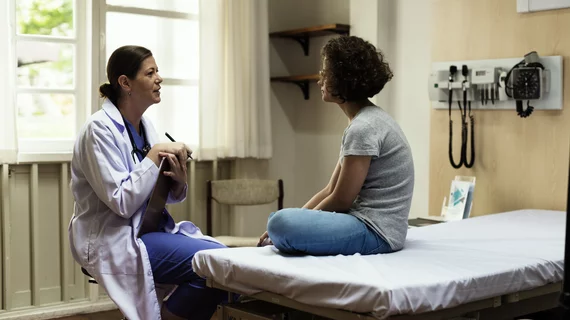6 tips for making MRI exams more autism-friendly
New guidance published in the journal Autism offers insight into how providers can help make MRI scans more comfortable for autistic patients who might be anxious during clinical exams.
MRI exams can be a stressful event for patients who have autism spectrum disorder (ASD). The loud noises and narrow tube may increase anxiety in those with sensory sensitivities and communicating needs or discomforts can be challenging with these patients. All of these factors can also decrease the quality of the examination, potentially nullifying results.
“While there are currently many studies using MRI to further our understanding about autism, there is a paucity of studies to assess how autistic individuals experience MRI; often reasonable adjustments are based on generalized assumptions about autistic experience and behavior. Furthermore, many adjustments are targeted to make the autistic person ‘MR-compatible’ and not making the MRI environment truly ‘autism/patient-friendly,’” corresponding author Nikolaos Stogiannos, with the Medical Imaging Department at Corfu General Hospital in Greece, and co-authors explained.
To better understand how providers can cater MRI exams to patients with autism, experts in the field analyzed thousands of research articles, eventually narrowing their search down to 21 pieces of literature that describe various techniques deemed feasible by other researchers.
The researchers highlighted six key areas where accommodations can be made. They are listed below.
Communication. Customize communication methods based on the patient’s preferences. This could include pre-screening Q&A sessions, presenting visual flowcharts or allocating additional time to pre-examination communications.
Psychology-based interventions. This can be achieved with individualized anxiety reduction plans and positive reinforcement strategies.
Sensory-easy adjustments. Dedicated quiet areas for patients to wait in before the exam can help ease sensory sensitivities. Eliminating wait times and keeping the number of staff members present to a minimum may also help.
Simulation and familiarization. Mock MRI sessions and pre-visits to the department before the exam can help patients familiarize themselves with the procedure process.
Distraction. Movies, music and videos that can be used during the scan help distract patients from the anxiety they may be feeling. For younger patients, scheduling their exam during routine naps is also beneficial.
Scan-based optimization. Completing the exam as quickly as feasibly possible with fast protocols and using “soft tone” sequences to reduce noise may help ease sensory overload.
Related Autism Content:
MRI scans link atypical growth of key brain structure during infancy with autism
MRI features uncover differences between the brains of autistic girls and boys
Placental MRI can predict adverse pregnancy outcomes early on in gestation
Fetal structural anomalies to blame for many pregnancy terminations
Maternal social disadvantages linked with reduction in baby brain volumes at birth
MRI features uncover differences between the brains of autistic girls and boys
Signs of autism can be spotted on routine prenatal ultrasound, research shows
Brain imaging pinpoints weaker ‘neural suppression’ in patients with autism

